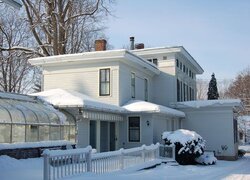Just discovered this board and wanted to let you know, for anyone who's thinking of buying a wood gasification boiler, that I installed an EKO-40 Wood Gasification boiler 2 years ago and I LOVE IT.
I haven't spent a dime on heating oil in two years now. I've got it hooked up in tandem with my oil boiler. My house has a hot water baseboard heating system. All my firewood is FREE.
My house is large...3300 square feet. I have the EKO-40 down in my basement right next to my oil boiler. In the coldest days of winter I load it in the morning and then in the evening....twice a day.......and it heats my entire house AND provides domestic hot water all day and night.
I LOVE THIS BOILER.
I looked into the TARM boilers but decided on the EKO because it was better quality and a cheaper price. In the two years I've operated this thing it has more than paid for itself. I bought it from the New Horizon Corp. in Virginia and they were VERY helpful with advice during the installation. I do not have a heat storage tank.
Anyway...there's my 2 cents worth.
I haven't spent a dime on heating oil in two years now. I've got it hooked up in tandem with my oil boiler. My house has a hot water baseboard heating system. All my firewood is FREE.
My house is large...3300 square feet. I have the EKO-40 down in my basement right next to my oil boiler. In the coldest days of winter I load it in the morning and then in the evening....twice a day.......and it heats my entire house AND provides domestic hot water all day and night.
I LOVE THIS BOILER.
I looked into the TARM boilers but decided on the EKO because it was better quality and a cheaper price. In the two years I've operated this thing it has more than paid for itself. I bought it from the New Horizon Corp. in Virginia and they were VERY helpful with advice during the installation. I do not have a heat storage tank.
Anyway...there's my 2 cents worth.




